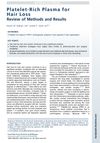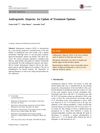Do hair follicles dies or are dormant ? Finasteride/Dutasteride 11/24/2024
Hair follicles can be dormant and potentially revived with treatments like finasteride and minoxidil, but irreversible loss occurs if certain structures are destroyed. Early intervention is more effective, and additional methods like microneedling may help.
View this post in the Community →
Similar Community Posts Join
5 / 1000+ resultscommunity Reminder: NURTURE those dormant hair follicles for as long as you can until PP405 comes out in 2028-2030
PP405 is anticipated as a future treatment for dormant hair follicles, but its effectiveness and safety are uncertain. Current treatments include oral minoxidil and microneedling, with some avoiding finasteride due to side effects.
community My first time coming to a balding related forum, I have some questions
19-year-old experiencing hair loss seeks advice on treatments. Suggestions include Finasteride, Minoxidil, microneedling, hair systems, and consulting a dermatologist.
community It’s getting worse. (4 months)
The conversation discusses hair loss treatments, with users suggesting the use of finasteride daily, considering minoxidil for aggressive hair loss, and discussing the normalcy of shedding during treatment. Some users recommend adding Nizoral shampoo and switching to dutasteride for better results.
community How possible is temple regrowth really?
A person started using finasteride, minoxidil, and dermarolling to regrow hair at the temples and is asking if it's possible. Some users report temple regrowth is possible with these treatments, while others find it challenging, and advise consistency and patience with treatment.
community PP405 - A True Breakthrough or Another Disappointment?
PP405 shows potential for hair growth, with 31% of advanced balding men experiencing over 20% increase in hair density in 8 weeks. However, skepticism persists due to selective data presentation and lack of long-term results, with comparisons to treatments like minoxidil and finasteride.
Related Research
6 / 1000+ results
research Platelet-Rich Plasma for Hair Loss
Platelet-Rich Plasma (PRP), a protein-rich extract from a patient's blood, shows promise in improving hair density, thickness, and quality, but the best method of use and number of treatments needed for noticeable results are still unclear.

research Androgenetic Alopecia: An Update Of Treatment Options
Minoxidil is the only FDA-approved topical drug for treating male or female pattern hair loss, and other medications like finasteride and dutasteride can also increase hair growth.

research Versatility of Autologous Growth Factor Concentrate Therapy in Early-Stage Androgenetic Alopecia: A Case Report
Autologous growth factor concentrate therapy shows promise for treating early-stage hair loss safely and effectively.

research Revolutionary Approaches to Hair Regrowth: Follicle Neogenesis, Wnt/β-Catenin Signaling, and Emerging Therapies
New hair regrowth therapies show promise but need more research.

research Platelet-Rich Plasma in Interventional Dermatology and Trichology: How Far Have We Come?
Platelet-rich plasma (PRP) shows promise in skin and hair treatments but results vary with preparation methods.

research Efficiency of 5% Minoxidil and Platelet-Rich Plasma Therapy in Androgenetic Alopecia: A Retrospective Study
PRP therapy is more effective and preferred over minoxidil for hair loss.